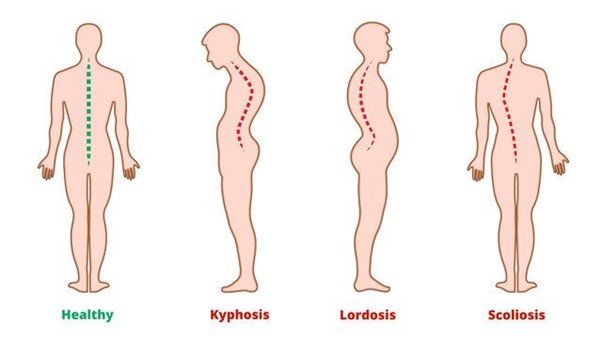A nurse in a busy emergency department provides care for many clients who present with contusions, strains, or sprains. What are treatment modalities that are common to all of these musculoskeletal injuries? Select all that apply.
Applying ice intermittently
Elevating the injured limb
Resting the affected extremity
Massaging the affected limb
Compression dressings
Correct Answer : A,B,C,E
A. Applying ice intermittently - Ice application helps reduce swelling and inflammation by constricting blood vessels. It is effective in managing pain and preventing further tissue damage in contusions, strains, and sprains.
B. Elevating the injured limb - Elevating the injured limb above the level of the heart helps reduce swelling by allowing fluids to drain away from the injured area. This is particularly important in managing contusions, strains, and sprains where swelling is a common symptom. Elevation supports the body's natural healing processes.
C. Resting the affected extremity - Rest is essential to allow the injured tissue to heal. Avoiding movement and stress on the affected area prevents further damage and promotes the healing process. Resting the extremity prevents additional strain on the injured muscles, ligaments, or tendons, allowing the body to repair the damaged tissues effectively.
D. Massaging the affected limb - Massaging the affected limb is generally not recommended in the acute phase of musculoskeletal injuries, especially contusions, strains, or sprains. Massaging can potentially worsen the injury, increase swelling, and cause further tissue damage. It is important to wait until the initial acute phase has passed and consult a healthcare professional before considering massage therapy.
E. Compression dressings - Compression helps control swelling by applying pressure to the injured area. Compression dressings or bandages provide support to the injured limb, minimize swelling, and reduce the risk of further injury. However, it's essential to apply compression correctly to avoid cutting off circulation, and it's usually best done under the guidance of a healthcare provider.
Nursing Test Bank
Naxlex Comprehensive Predictor Exams
Related Questions
Correct Answer is A
Explanation
A. Urine culture and sensitivity
Explanation: A urine culture and sensitivity test involves growing bacteria from a urine sample in a laboratory setting. Once the bacteria have grown, they are exposed to different antibiotics to see which one is most effective in inhibiting their growth. This helps healthcare providers identify the specific strain of bacteria causing the infection and choose the most appropriate antibiotic treatment.
B. Serum creatinine level
Explanation: Serum creatinine level is a blood test used to measure kidney function. It evaluates how well the kidneys are filtering waste from the blood. While important for assessing kidney health, it does not determine the specific bacteria causing a urinary tract infection or the appropriate antibiotic treatment.
C. Urinalysis
Explanation: Urinalysis is a broad screening test that assesses various components in the urine, such as red and white blood cells, protein, glucose, and bacteria. While it can detect signs of a urinary tract infection (such as the presence of bacteria and white blood cells), it does not identify the specific bacterial strain causing the infection or provide information about antibiotic sensitivity.
D. Kidney scan
Explanation: A kidney scan, also known as a renal scan, is a medical imaging technique used to assess the structure and function of the kidneys. It can help diagnose conditions like kidney stones, urinary obstruction, or kidney infections. However, it does not determine the strain of bacteria causing a urinary tract infection or guide antibiotic treatment.
Correct Answer is D
Explanation
A. Lordosis: Lordosis is an inward curvature of the spine, commonly seen in the lower back (lumbar spine) or neck (cervical spine). It creates a swayback appearance. Lordosis is not typically associated with osteoporosis.
B. Scoliosis: Scoliosis is a sideways curvature of the spine, creating an "S" or "C" shape. While scoliosis can occur in people of all ages, it is not directly caused by osteoporosis.
C. Ankylosis: Ankylosis refers to the stiffening or fusion of joints, often due to inflammation and progressive loss of function. It is not a spinal deformity associated with osteoporosis.
D. Kyphosis: Kyphosis is a forward rounding of the back, leading to a hunched or humpbacked posture. It commonly affects the upper back (thoracic spine) and is associated with osteoporosis, especially in older adults. When the bones in the spine weaken due to osteoporosis, they can compress and collapse, leading to the development of kyphosis. This condition is sometimes referred to as a dowager's hump when it occurs in older women.

Whether you are a student looking to ace your exams or a practicing nurse seeking to enhance your expertise , our nursing education contents will empower you with the confidence and competence to make a difference in the lives of patients and become a respected leader in the healthcare field.
Visit Naxlex, invest in your future and unlock endless possibilities with our unparalleled nursing education contents today
Report Wrong Answer on the Current Question
Do you disagree with the answer? If yes, what is your expected answer? Explain.
Kindly be descriptive with the issue you are facing.
